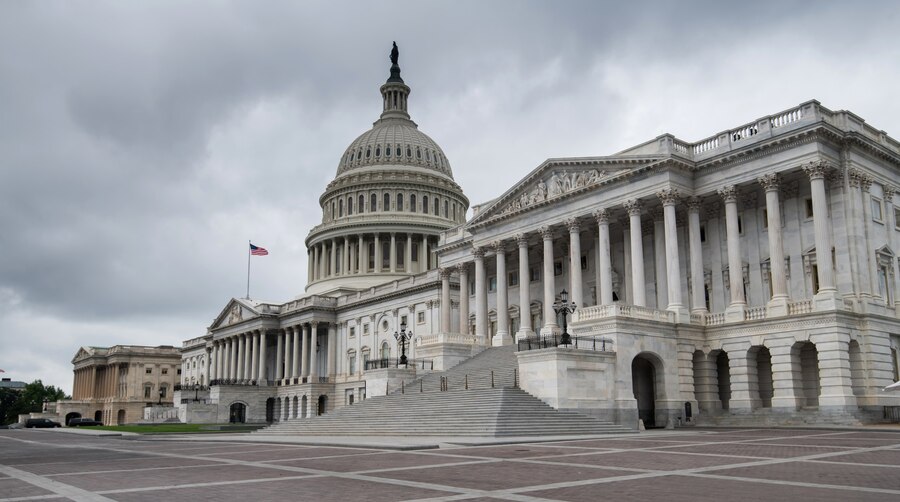The USA Senate: Navigating the Heart of American Governance
Introduction
The United States Senate is an essential branch of government that shapes the country’s laws and policies. Anyone concerned with the democratic process must comprehend its complex inner workings.The USA Senate We explore the origins, institutional details, powers, and controversies of the Senate in this article.
History of the USA Senate
Founding Principles
The original framers of the United States Senate established a system of checks and balances during the Constitutional Convention in 1787. With its mission of providing legislative stability and equitable representation for the states, the Senate quickly became an essential branch.
Evolution Over the Years
Adapting to the changing demands of the nation, the Senate has experienced substantial change since its establishment. The Senate has grown from its humble beginnings as a meeting place for states’ rights advocates to a formidable legislative chamber that shapes national policy.
Structure of the USA Senate
Number of Senators
There are a total of 100 senators, with 2 representatives from every state (regardless of population size). With each state having an equal say in legislation, cooperation and compromise are encouraged.
Terms and Elections
In order to ensure continuity, senators serve staggered six-year terms. Stability and the flexibility to respond to public opinion through periodic changes in the Senate’s makeup are the goals of this system.
Committees and Their Roles
The Senate’s committees, which are specialized bodies tasked with investigating legislation, reviewing it, and influencing policy decisions, are essential to the body’s effectiveness. The inner workings of the Senate can be better understood by familiarizing oneself with the committee structure.
Powers and Responsibilities
Legislative Functions
Legislation must be collaboratively passed into law by the Senate and the House of Representatives because of their shared legislative authority. Extensive discussion and avoidance of rash decisions are hallmarks of this dynamic process.
Confirmation of Appointments
Appointing federal judges and cabinet members is a critical function of the Senate. To keep things in check, the executive branch is subject to this confirmation power.
Checks and Balances
The Senate is a vital part of our system of checks and balances, which helps to ensure that no one branch of government gets too powerful. The strength and durability of the country’s government are bolstered by this function.
Key Senators Throughout History
Influential Figures
Many historical personalities who had a significant impact on the United States spent time in the Senate. Each of these senators—from Daniel Webster to Margaret Chase Smith—made history.
Memorable Legislative Moments
Passage of landmark legislation, like the Civil Rights Act of 1964, has taken place in the Senate. The Senate’s role in promoting social progress can be better understood in light of these instances.
Recent Developments
Changes in Senate Dynamics
Changes in party makeup and ideological terrain have altered the political dynamics of the Senate in recent years. Legislative priorities and the capacity to pass meaningful measures are affected by these changes.
Impact on National Policies
Healthcare, taxes, and foreign policy are just a few areas where the nation feels the effects of the Senate’s actions.The USA Senate To understand the Senate’s relevance in the modern day, one must look at the results of recent legislative sessions.
Criticisms and Controversies
Senate’s Role in Policymaking
Critics contend that the Senate’s form can lead to legislative deadlock, preventing timely policy decisions. Exploring these critiques sheds light on the issues inherent in the Senate’s structure.
Public Perceptions and Criticisms
Trust in the Senate is an institution that swings in public opinion, which is often impacted by political division. To keep the Senate legitimate in the eyes of the American people, it is essential to address these views.
The Future of the USA Senate
Potential Reforms
Alterations to the Senate’s makeup or the filibuster rule are two possible improvements that are now the subject of ongoing discussion. One way to look at the Senate’s future is through these recommendations.
Anticipated Changes
It is imperative that the nation’s governmental institutions adapt to the changing times. To keep up with the future of American government, one must anticipate changes in the function and organization of the Senate.
Conclusion
Finally, the United States Senate is still an important part of our democracy and a very active and powerful body. Anyone concerned about the direction of American government must familiarize themselves with its background, structure, and current problems.
FAQs
How often are Senate elections held?
Half of the Senate seats are up for grabs every two years in the election.
Can the Senate override a presidential veto?
A veto from the president can be overridden by a two-thirds majority vote in either the Senate or the House of Representatives.
What is the role of Senate committees?
Legislation, investigations, and policy decisions are all heavily influenced by Senate committees.
How long is a senator’s term?
Senators serve staggered six-year terms, ensuring continuity while permitting occasional turnover.
Are there any proposed reforms for the Senate?
Changing the makeup of the Senate or modifying the filibuster rules are two examples of the many reform initiatives now under discussion.







